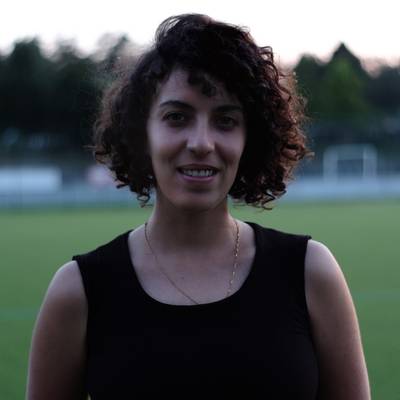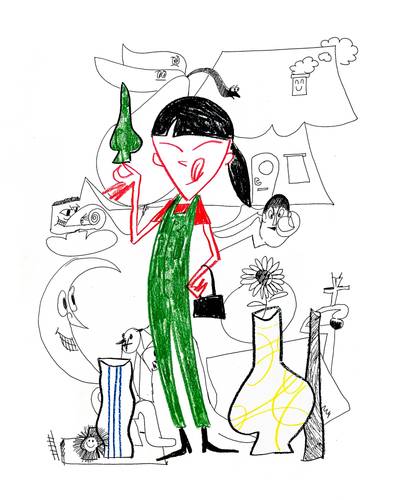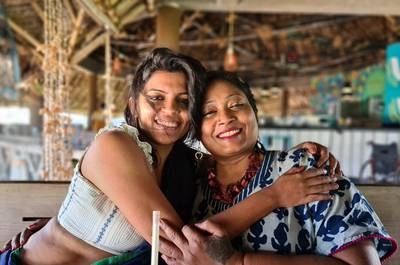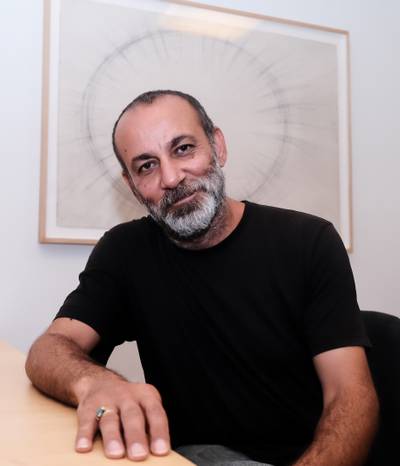

Cooking Sections: Daniel Fernández Pascual and Alon Schwabe with the bread display at the Maaleipä Feast on September 21, 2024
Ines Montalvao is a multidisciplinary creative with demonstrated work in curation, experience & concept design and co-creation in international projects and exhibitions, with museums and other organizations. Ines focuses her creative practice in the field of art-science, exploring cross-disciplinary approaches like creative writing and storytelling, illustration, performance, and other innovative ways to create narrative environments that enact emotions and enable meaningful experiences.
Daniel Fernández Pascual and Alon Schwabe, known as the artistic duo Cooking Sections, see “food as a lens for understanding the world”. They use food as a medium to question global food production and propose alternative, more sustainable systems that shape the land, our diets, and our futures. Their practice combines art with ecology, policy, and cultural transformation.
Cooking Sections’ recent visit to Finland was centred around the IHME Helsinki Commission 2024 Maaleipä Challenge, which invited home bakers, bakeries, restaurants, schools, and communities in Finland to create bread recipes that combine the well-being of land, water and people’s guts. Cooking Sections’ projects use food as a medium to question global food production and also confront the inequities within food systems. The core of their modus operandi is gathering the latest scientific knowledge by meeting researchers and experienced experts.
I spoke to Daniel and Alon during Climate Security Festival 2024. I was involved through Artists with Evidence in organising the festival to which IHME Helsinki contributed to a program themed around Food Security. The topic was also very much central to the Maaleipä Challenge. Their work resonates with the dialogue at the festival about the need to reframe what we understand as “security,” reiterating the need to move away from the military-centric lens it is often seen through and emphasizing food sovereignty, ecological health, and long-term sustainability toward threads of hope, narrative, resilience, and action.
INES: How did the idea of Cooking Sections come about? Could you also walk us through your collaboration with IHME Helsinki and your expectations for the upcoming Maaleipä Feast this week?
ALON: We run a practice called Cooking Sections, which we started in London in 2013. Our work uses food as a tool to observe landscapes in transformation. The act of eating – ingestion and digestion – is shared among all living species, from microbes to large animals. For us, it became an interscalar tool, a vehicle to understand how food grows and how our food systems impact the world. Over time, we’ve developed long-term projects in collaboration with cultural institutions, resident groups, activists, restaurants, and many others to think about how we can adapt and transform food infrastructures, especially in response to the climate crisis.
DANIEL: The Maaleipä challenge came about through conversations we’ve had over the years with farmers, scientists, and various collectives in Finland. These conversations focused on the challenges within the current agricultural system and the impact of industrial-scale activities on the Baltic Sea. We started thinking about people’s dreams for the future of the food system and how we could address issues like land use, chemical dependencies, and ecological health. Through this process, the idea for a dish – or, in this case, a loaf of bread – emerged to bring these questions together. The commission itself came from an invitation almost three years ago by the Contemporary Art Commissioning Agency IHME Helsinki, which brings together art, science and climate work.
You initiated CLIMAVORE in 2015, a term you coined as a call to rethink a truly broken food system and move beyond a carnivore, omnivore, locavore, vegetarian, or vegan diet to tackle these new seasonalities while addressing the extractive and intensive practices that lead to them. Are there any aspects of your CLIMAVORE approach that you’ve adapted to the local context in Finland?
D: In CLIMAVORE, we focus on human-made seasons rather than the traditional spring, summer, autumn, and winter, which are becoming increasingly unpredictable due to extractivism and the climate emergency. Instead, we structure seasons around issues of “polluted oceans” or “depleted soils”. In Finland, we’ve observed similarities with other places we’ve worked, especially regarding dependencies on agrochemicals and the fact that much of the land is used to grow animal feed rather than food for people. It’s a global phenomenon, really.
Have your collaborations with scientists, artists, and others shaped your work? Was there a particular breakthrough moment where you felt this multidisciplinary approach had a big impact?
A: Our practice is research-driven, and it grows through the projects we develop. It’s shaped by the context we work in. The Maaleipä challenge, for instance, evolved from the conversations we had here in Finland and the specific food cultures we encountered. It’s always about adapting to the local context.
Were there any struggles along the way?
D: Rather than struggles, I think the challenge now is ensuring the bread recipes continue beyond the event. We don’t want Maaleipä to end with the festival—it should mark the beginning of a longer journey. The goal is for these recipes to circulate and for people and bakeries to keep making them. The more they’re made, the more potential there is for change.
Were the recipes created from scratch?
A: We worked with experts to develop guidelines for the Maaleipä challenge, which were published online. People have created recipes in response to these guidelines in incredible ways. What’s interesting is that the recipes aren’t just for bread – they’re also recipes for land use and agriculture. They promote biodiversity and explore different ways of growing food, where we’re not only feeding humans but also regenerating the soil.
It is valuable to consider how what we eat can regenerate the land. It also makes me wonder how seasons might change our eating habits. What does that mean for the way we approach food in the future?
A: We’ve been exploring this through CLIMAVORE by addressing how food infrastructures can adapt to new, climate-driven seasons. For instance, in Skye (Scotland), we’ve been working to move away from salmon farming, which has significant environmental impacts, and towards alternative aquacultures – featuring seaweeds, oysters, and mussels – that filter water as they grow. It’s about promoting crops and forms of aquaculture that are resilient to climate extremes, like drought-resistant seeds, rather than depending on industrialized, modified crops. We need to rethink traditional seasons, especially when supermarkets now offer standardized produce year-round.
That’s an important shift. Do you also address the broader impact of climate change on marginalized and Indigenous communities in your work?
D: This question is central to the way we observe land and food practices in an era of climate breakdown. It’s important to remember that agroecology and regenerative cultivation are nothing new. Soil care practices to source food are ancestral and deeply embedded in marginalised and Indigenous communities, including those in Sápmi and all over the world. Despite colonisation, extractivism and cultural erasure, these communities have kept nourishment systems alive and co-evolving. They are not only crucial in addressing the climate crisis but are leading the way forward with their knowledge and practices. Without their leadership, we cannot find a sustainable path. How these questions enter a project depends on its context and location as we aim to contribute towards building solidarity networks across geographies. For instance, in Helsinki, our focus has been on the local communities of growers and the way their practices resist or intersect with larger agricultural policies in Finland. This question is central to the way we observe land and food practices in an era of climate breakdown.


Discussion on the societal impact of the Maaleipä Challenge and food security with the challenge jury members: Galina Kallio, Eliisa Kuusela, Ruby Van Der Wekken, Cooking Sections and Paula Toppila from IHME Helsinki.
In your projects, do you also engage with companies involved in monoculture and other practices harmful to the landscape, in addition to small farming co-ops?
A: Yes, we engage with a broad range of stakeholders, including experts from governmental agencies and think tanks. It’s about putting forward ideas that institutions can gradually implement, slowly but effectively.
D: The landscapes we live in are not pristine; they are often already damaged or disturbed, such as soil used for industrial food production. Our focus is on how to spark conversations around repurposing these lands. It’s not just about restoring nature, but transforming them for new uses that can nourish both the land and the people.
Sometimes, people or institutions seem more self-congratulatory than realistic in their efforts. Do you encounter this?
D: Yes, but we try to make forgotten or overlooked connections—like the link between soil and bread. The idea that “leipää” (bread) is connected to “maa” (land) is important for shifting people’s perspectives. Bread shouldn’t just be something you buy in a plastic bag without a second thought.
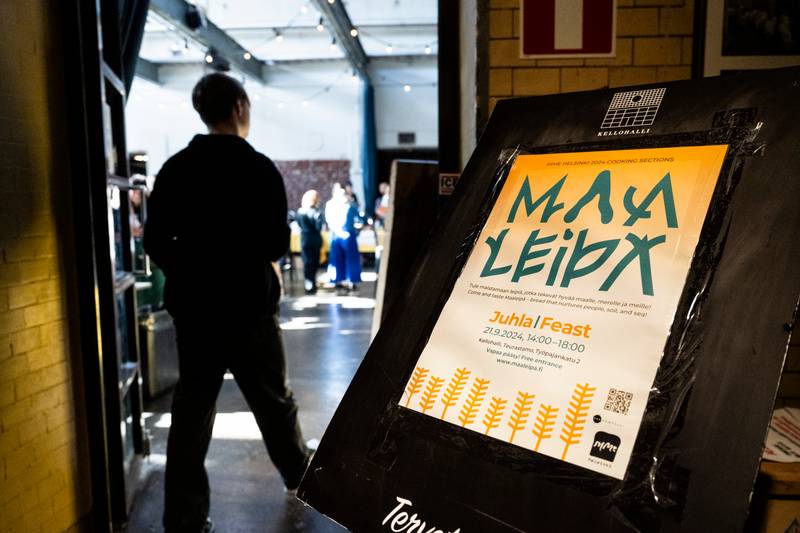

Maaleipä Feast was celebrated in Teurastamo’s Kellohalli on September 21, 2024.
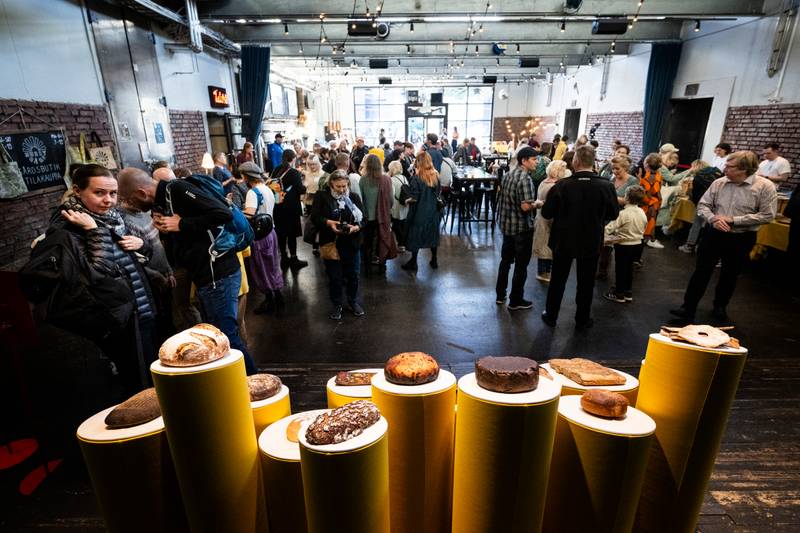

Maaleipä Feast was celebrated in Teurastamo’s Kellohalli on September 21, 2024.
What challenges do you face promoting local food practices in a globalized world, and how do institutions react to your approach?
A: It’s challenging because many institutions aren’t yet ready to engage in these conversations. But long-term involvement can indeed lead to change, even if it’s slow. We don’t critique institutions for what they are or aren’t, but work with them as platforms to explore alternative futures.
Art institutions often cater to the elite. How do you reconcile your critical stance with exhibiting in these contexts?
D: We focus on creating work that resonates with us and responds to societal demands around food systems and ecologies. If those conversations are happening, we engage. For example, our goal isn’t to make science more accessible but to contribute to cultural production, using science when it’s relevant. In the context of art institutions, we often create work outside the museum walls.
Do you hope your work influences larger food policies?
A: Definitely. Our work has engaged with policies on land use and public health, aiming to shift laws, policies, and planning systems. We don’t separate art from policy—they go hand in hand.
D: We aim to engage with both to amplify efforts toward systemic change.
How do you view the lifespan of your projects?
A: It depends on the project. Some have been ongoing for eight years or more. Even when we’re no longer directly involved, the work continues through others. Many of our projects deal with transforming ecologies, and that’s a slow, decades-long process. The ideas often outlive our direct involvement, especially as collaborators continue the work.
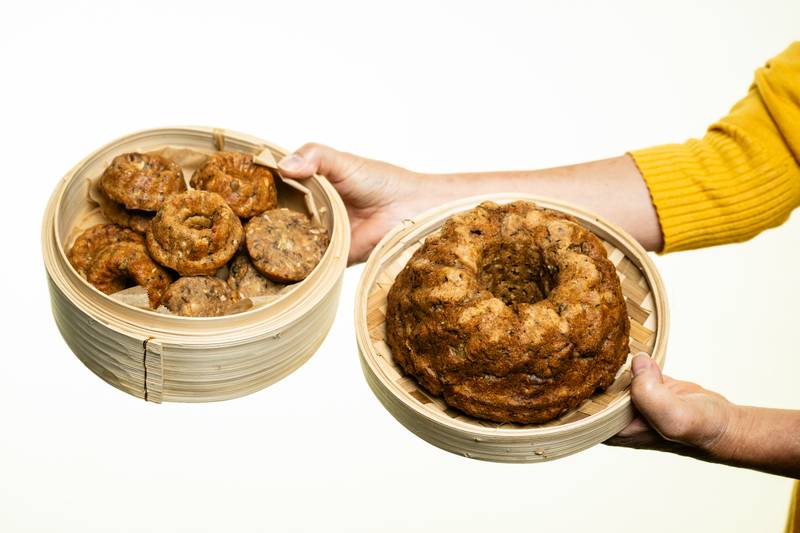

Round the Baltic Sea Caraway Cake by Anna Luttinen received a special mention by Leipäpaja.


Gluten-Free Hemp Buckwheat Bread by Merja Teräsvuori won the third prize in the challenge.
I’ve been running a series of conversations about war and the environment, and food always comes up. One session focused on how fermentation helps displaced people retain their cultural identity. Are these issues, like the intersection of war, environment, and food systems, on your radar?
D: Absolutely. The violence of food systems is part of the broader violence we see in the world today, from industrialized agriculture to the globalized food system. While we haven’t done specific projects on war and food systems, it’s definitely relevant to what we think about.
What are you currently excited about for the future? Are there any upcoming projects or ideas you can share?
A: We’re working on a few ongoing projects. One is in Skye, where we’re exploring how to shift the local economy and food culture away from salmon farming towards alternative aquaculture. We’re also involved in two projects developed through the CLIMAVORE x Jameel at RCA initiative: Monoculture Meltdown, which focuses on farmer seeds resilient to drought and heat, and Water Buffalo Commons, a project in the northern outskirts of Istanbul that aims to preserve water buffalo habitats and its cultural, culinary and ecological significance. There are many more ideas and projects in the making as well.
A week after the Maaleipä Feast, I followed up with Cooking Sections to hear their reflections on the event, what surprised them, and their key takeaways. Here’s how they responded:
“It was wonderful to see all the bakers and bread come together for the Maaleipä Feast. We were surprised by the conversations, engagement, and camaraderie that developed amongst the bakers throughout the day. It was wonderful to taste all the breads they prepared and to witness the deep engagement with the themes of the challenge. The breads weren’t only very tasty but brought forward diverse approaches and arguments for new ways of thinking about land use, agroecology, and food security in Finland. It was very exciting to hear the different responses from the audience and to learn about the ways Maaleipä can become an infrastructural response to the climate crisis and biodiversity loss in Finland.”
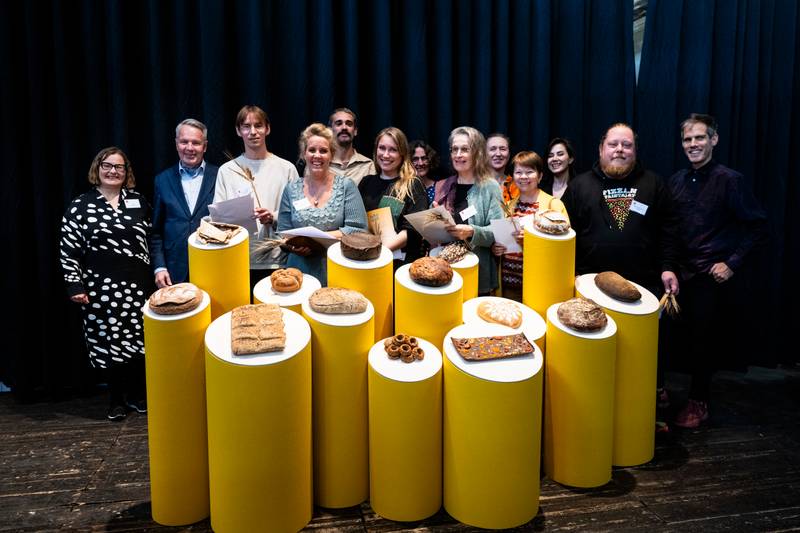

The winners and prize givers of the challenge from left: Paula Toppila (IHME Helsinki), MP Pekka Haavisto (Greens), Jani Anders Purhonen, Malin Furu, Daniel Fernández Pascual (Cooking Sections), Jella Bertell, Minna Kaljonen (SYKE), Merja Teräsvuori, Eliisa Kuusela (Leipäpaja), Anna Luttinen, Gelawej Viyan (Ripaus kurkumaa blog), Rami Oksanen and Alon Schwabe (Cooking Sections).
